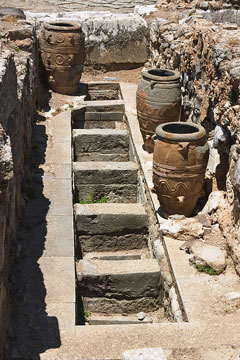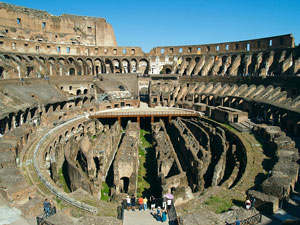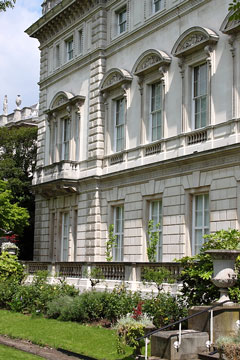
Europe History and Culture
Map of Europe > Europe History | Europe Travel Tips |
Europe Relief Map | Europe Topo Map
 The first civilization in Europe appeared in Crete, Greece, about 2000
BC, and was named for King Minos. Their culture disappeared about
1450 BC, to be followed by the Mycenaean culture described in the Iliad
and the Odyssey by Homer.
The first civilization in Europe appeared in Crete, Greece, about 2000
BC, and was named for King Minos. Their culture disappeared about
1450 BC, to be followed by the Mycenaean culture described in the Iliad
and the Odyssey by Homer.
Classical Greek civilization, which began in the eighth century BC, introduced art, philosophy, mathematics, science, and politics. Greece's contributions to society were then passed on to Rome, Italy, which fused it with their contribution of builders, engineers, lawmakers, and military strategists. It is fair to say that the art, architecture, politics, religion, and writings that originated in Greece and Rome continue to have a large influence on Europe today.
 The Roman Empire,
which spanned 500 years and stretched from Britain to Persia,
introduced Christianity to Europe. As invasions from Germanic tribes
from the north destroyed the Roman Empire, Europeans continued to have
the Christian church in common. During the 11th century, the
Christian church split into two factions: Orthodoxy in the east, and
Roman Catholicism in the west. When Roman Catholicism was divided by
the Protestant Reformation in the 16th century, a century of wars ensued.
The Roman Empire,
which spanned 500 years and stretched from Britain to Persia,
introduced Christianity to Europe. As invasions from Germanic tribes
from the north destroyed the Roman Empire, Europeans continued to have
the Christian church in common. During the 11th century, the
Christian church split into two factions: Orthodoxy in the east, and
Roman Catholicism in the west. When Roman Catholicism was divided by
the Protestant Reformation in the 16th century, a century of wars ensued.
No outline of European history can be complete without some mention of the Middle Ages, or Medieval period, which began with the decline and fall of the Roman empire in the 5th century, and ended with the emergence of the Renaissance in the 15th century. During the Middle Ages, Europe's civilization declined and its political and social unity was replaced by a fragmented, feudal system.
 During the 15th and 16th centuries, the Renaissance occurred, in which art, religion, and critical thinking enjoyed a rebirth.
In addition, the political focus shifted to Western Europe, and the nations of England, France, Spain, and Portugal emerged.
This was also the era when ideas about democracy and equality became popular.
During the 15th and 16th centuries, the Renaissance occurred, in which art, religion, and critical thinking enjoyed a rebirth.
In addition, the political focus shifted to Western Europe, and the nations of England, France, Spain, and Portugal emerged.
This was also the era when ideas about democracy and equality became popular.
In the 18th century, France's Napoleon attempted, and failed, to seize all of Europe. Around this time, the American colonies also achieved independence from Britain. As Europe struggled between democracy and socialism, two world wars broke out that shifted the balance of power. Today, most European countries are allied under the North Atlantic Treaty Organization (NATO).
Currently, Europe is one of the most diverse continents in the world, comprising more than 40 languages and 40 countries, each with their own unique culture and history.
All rights reserved.
Europe Map Europe History & Culture • Europe Travel & Tourism Europe Relief Map • Europe Topographic Map